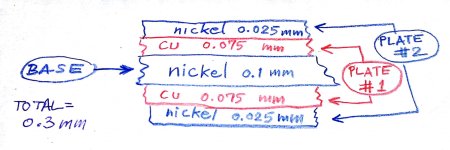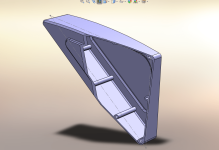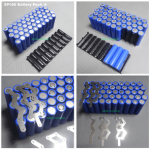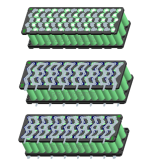ichiban
100 W
kWeld Spot Welder Questions 2018.09.27
Most of the questions are for tatus1969 (Frank), the originator of the kWeld system. However, anyone's comments to any of the questions will be greatly appreciated.
Since the original thread :
kWeld - "Next level" DIY battery spot welder
Post by tatus1969 » Jun 22, 2017 6:26 am
https://endless-sphere.com/forums/viewtopic.php?f=14&t=89039&hilit=kweld
is very lengthy (18 pages as of Sept 27, 2018) and hard to search. So I decided to start another thread as a summary of questions important to newbies (including me) before acquiring such system (or any other spot welders) and DIYing own battery pack.
I am interested in buying a set of kWeld for my DIY Li-Ion battery pack(s) welding, here are the questions :
I made my first pack 14s7p out of old notebook 18650 cells using Vruzend caps (no welding + no soldering) and it runs fairly well considering some of the cells might be over 10-yrs-old. Of course, I get terrible figures of 0.3-0.4V with sometime even 0.7-0.8V sag from the pack. I manage to run over 1000km out of it in about 3 months already. I've learned quite a bit. So, it is about time to get the real thing.
Requirements :
1) Wanna spot weld nickel-plated copper strip, may be 0.2-0.3 mm thick for my 14s7p triangle pack. While another 14s5p bar pack is with W-shaped nickels for a readily available battery holders from Aliexpress. I am thinking of welding double layers of 0.2mm nickel.
Is the kWeld capable of doing that ? I don't find it listed in your spec.
2) I prefer a stationary welding unit since I don't have Li-Po batteries and car batteries are too heavy and too bulky to work with. I have several spare switching power supplies 12V 30A (per pic.1).
Pic 1 : switching power supplies 12V 30A
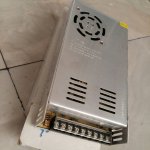

May be I can parallel them to get higher amps needed with the help of ultra caps ?
3) From kweld's web : https://www.keenlab.de/index.php/shop/
What parts of kWeld kit do I need ? Ultra Capacitors ? How many of each ? Prefer to have all of the necessary parts (including nuts, bolts, etc) so I don't have to run around to find them. And from your suggestion, I will work it out to get a complete list. Please advise.
4) What else of extra work / assembling do I need to do to get this kWeld ready to weld my battery pack ?
5) I have a hard time sourcing those pre-cut to shape nickel-plated copper strip or even copper strip alone, may be 0.2-0.3 mm thick, with pre-slit channels in-between the welding spots. My laser-cut shop said it is hard, I wonder if possible, to laser-cut copper sheet. All I can find on-line are nickel, plated or pure strips. Pic.2 shows one of the shape PaulID posted which looks great to me. A simple single slit channel should be OK. Or should I have a big sheet of copper then plate it with nickel, before laser-cut it into desire shape. So laser cut will see it as nickel instead of copper - LOL. Too much of works just for a better conductivity.
Pic.2 : PaulID pre-cut strip with slit channels

6) Does anyone know what is the minimum effective thickness of nickel layer on that nickel-plated copper strip (for spot welding) ? So I can specify that when I have the plating shop do it for me.
If I cannot find that ready-made copper strip, I might have to buy a roll of copper sheet and manual-cut it with scissors into different shapes to cover the whole positive and negative terminals of each of the 7-p battery group (of the 14s7p triangle pack) without the pre-slit channels. Here is what I mean ...
Pic.3 from eric1565 nickel sheet
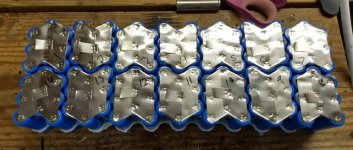
7) For the slits, I'm thinking about hammering 0.2 copper sheet (might be nickel-plated) with a chisel to get the desire slit channels ? Any better method ? Or I will have to hammer copper sheet like crazy to get 14s7p = 196 pos+neg slits.
Will this scissors-cut copper sheet (without the pre-slit channels) get a good result from welding with kWeld ?
8) Please recommend source to buy these pre-cut copper strips (similar to PaulID's) or how to DIY.
Thanks for the owner's of the pictures reference here.
Any comments will be appreciated.
Most of the questions are for tatus1969 (Frank), the originator of the kWeld system. However, anyone's comments to any of the questions will be greatly appreciated.
Since the original thread :
kWeld - "Next level" DIY battery spot welder
Post by tatus1969 » Jun 22, 2017 6:26 am
https://endless-sphere.com/forums/viewtopic.php?f=14&t=89039&hilit=kweld
is very lengthy (18 pages as of Sept 27, 2018) and hard to search. So I decided to start another thread as a summary of questions important to newbies (including me) before acquiring such system (or any other spot welders) and DIYing own battery pack.
I am interested in buying a set of kWeld for my DIY Li-Ion battery pack(s) welding, here are the questions :
I made my first pack 14s7p out of old notebook 18650 cells using Vruzend caps (no welding + no soldering) and it runs fairly well considering some of the cells might be over 10-yrs-old. Of course, I get terrible figures of 0.3-0.4V with sometime even 0.7-0.8V sag from the pack. I manage to run over 1000km out of it in about 3 months already. I've learned quite a bit. So, it is about time to get the real thing.
Requirements :
1) Wanna spot weld nickel-plated copper strip, may be 0.2-0.3 mm thick for my 14s7p triangle pack. While another 14s5p bar pack is with W-shaped nickels for a readily available battery holders from Aliexpress. I am thinking of welding double layers of 0.2mm nickel.
Is the kWeld capable of doing that ? I don't find it listed in your spec.
2) I prefer a stationary welding unit since I don't have Li-Po batteries and car batteries are too heavy and too bulky to work with. I have several spare switching power supplies 12V 30A (per pic.1).
Pic 1 : switching power supplies 12V 30A


May be I can parallel them to get higher amps needed with the help of ultra caps ?
3) From kweld's web : https://www.keenlab.de/index.php/shop/
What parts of kWeld kit do I need ? Ultra Capacitors ? How many of each ? Prefer to have all of the necessary parts (including nuts, bolts, etc) so I don't have to run around to find them. And from your suggestion, I will work it out to get a complete list. Please advise.
4) What else of extra work / assembling do I need to do to get this kWeld ready to weld my battery pack ?
5) I have a hard time sourcing those pre-cut to shape nickel-plated copper strip or even copper strip alone, may be 0.2-0.3 mm thick, with pre-slit channels in-between the welding spots. My laser-cut shop said it is hard, I wonder if possible, to laser-cut copper sheet. All I can find on-line are nickel, plated or pure strips. Pic.2 shows one of the shape PaulID posted which looks great to me. A simple single slit channel should be OK. Or should I have a big sheet of copper then plate it with nickel, before laser-cut it into desire shape. So laser cut will see it as nickel instead of copper - LOL. Too much of works just for a better conductivity.
Pic.2 : PaulID pre-cut strip with slit channels

6) Does anyone know what is the minimum effective thickness of nickel layer on that nickel-plated copper strip (for spot welding) ? So I can specify that when I have the plating shop do it for me.
If I cannot find that ready-made copper strip, I might have to buy a roll of copper sheet and manual-cut it with scissors into different shapes to cover the whole positive and negative terminals of each of the 7-p battery group (of the 14s7p triangle pack) without the pre-slit channels. Here is what I mean ...
Pic.3 from eric1565 nickel sheet

7) For the slits, I'm thinking about hammering 0.2 copper sheet (might be nickel-plated) with a chisel to get the desire slit channels ? Any better method ? Or I will have to hammer copper sheet like crazy to get 14s7p = 196 pos+neg slits.
Will this scissors-cut copper sheet (without the pre-slit channels) get a good result from welding with kWeld ?
8) Please recommend source to buy these pre-cut copper strips (similar to PaulID's) or how to DIY.
Thanks for the owner's of the pictures reference here.
Any comments will be appreciated.


